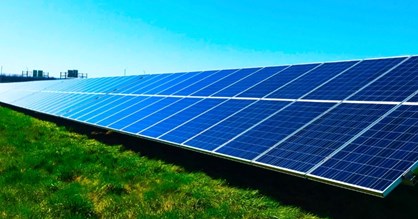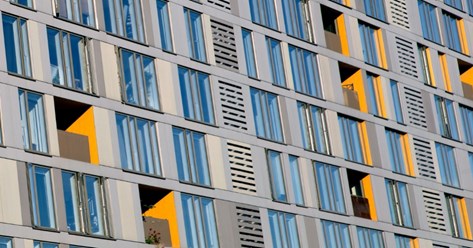Career Advice
Sustainable Tech: How Can We Build a Better Future?
Sustainable development goals have been on the agenda of most countries due to the peace and prosperity they bring to the people and environment.
Sustainable development goals have been on the agenda of most countries due to the peace and prosperity they bring to the people and environment. Every day, people are exposed to the effects of global warming, pollution, and the depletion of natural resources which makes sustainable living a core question of today’s existence.
As technology is a key driver of innovation in everyday life, incorporating sustainable practices into technology has opened a viable way forward. Innovative strategies in transportation, manufacturing, smart cities, and energy consumption are significant in reducing the overall impact on the environment and sustaining our planet. Sustainable technology has become the buzzword for countries worldwide and is generating solutions to the humanitarian crisis of resource depletion.
So, let’s explore how sustainable technology is helping build a better future for us and future generations.
What is Sustainable Technology?
The United Nations Brundtland Commission in 1987 defined sustainability as “meeting the needs of the present without compromising the ability of future generations to meet their own needs”. As nations are on their path of development along with the threat of climate crisis, sustainable measures must be incorporated into these development needs to create a better future.
Sustainable technology refers to the innovations and developments in technology that help minimize environmental impacts and save resources from further depletion. Some popular examples of sustainable technologies are electric vehicles, solar energy, smart cities, LEED buildings and construction, and biofuel.
Reasonable governance of technology through the integration of best practices can help reduce the carbon footprint and bring in several other positive changes.

If you wish to be a part of the technology sectors that are providing breakthroughs in sustainable living, enroll in a technology co-op program at the Canadian College of Technology and Business (CCTB), Vancouver. CCTB offers several tech programs that will help develop your knowledge in technology and sustainability.
With the co-op experience and expert guidance, you can get chances to be a part of various innovative tech companies in Vancouver and around the world, thereby contributing your part to developing sustainable living practices.
How can we build a better future using sustainable tech?

Sustainable technology aims to create products that have a positive impact on the environment and economy. From the setting up of new electronic vehicle companies to building green homes and using smart controls and green energy, the world is finding ways to build a sustainable future.
With companies adding sustainable governance to their action plans, let’s take a look at some of the industrial sectors which are at the forefront of bringing in this positive change.
Electric Vehicles
Transportation is a sector that leads to the emission of a large amount of fossil fuels and greenhouse gases into the atmosphere. As the travel demand is expected to grow in the coming years, it can lead to greater environmental problems from pollution.
With the electric vehicle revolution taking the world by storm, it is believed that the environmental impact caused by the transportation industry can be significantly reduced. The governments are also taking steps, such as installing charging stations on the road, to encourage the use of electric vehicles.
If more and more people invest in electric vehicles, the idea of clean transportation will become a reality.

Solar Energy

Depletion of energy sources is a main concern when talking about sustainability. But the change to renewable energy sources, such as solar energy, will help preserve natural resources, reduce the carbon footprint, and lower greenhouse gas emissions.
The Solar Energy Industries Association reports that the average cost for the installation of solar panels has been reduced by 70% which makes it more accessible to the entire population. With more reliability of solar power, we can save the natural energy resources of our planet.
LEED Buildings
Leadership in Energy and Environmental Design (LEED) is the system used to rate green building design, construction, and performance. As the population increases, the demand for better infrastructure will also go up. Reports from the World Green Building Council show that 39% of the total carbon emissions happen from buildings and their construction.
But the wise use of technologies and ideas for construction helps reduce fuel and energy consumption along with other material usage and constant maintenance. Following LEED-approved designs for construction can help reduce carbon emissions to a great extent.

Apart from these, using precision equipment in agriculture can reduce water wastage and enable the controlled use of chemical fertilizers. The Internet of Things also enables better micromanagement in smart cities and thereby helps combat pollution and the wastage of resources. LED Lighting is also a great sustainable technology that helps minimize energy consumption.
With organizations continuing to prioritize sustainable measures through innovative technologies, you can also be a part of their teams with the right qualifications and experience. So, grab your tech seats today.
Click here to read more!
More News & Blogs
We acknowledge that the territories on which CCTB and its campus are situated are the traditional, ancestral and unceded territories of the xʷməθkʷəy̓əm (Musqueam), Sḵwx̱wú7mesh (Squamish) and Sel̓íl̓witulh (Tsleil-Waututh) Nations. We thank them for having cared for this land since time immemorial, honour their graciousness to the students who seek knowledge here, and iterate our dedication to valuing the ongoing contributions of Indigenous peoples and communities.